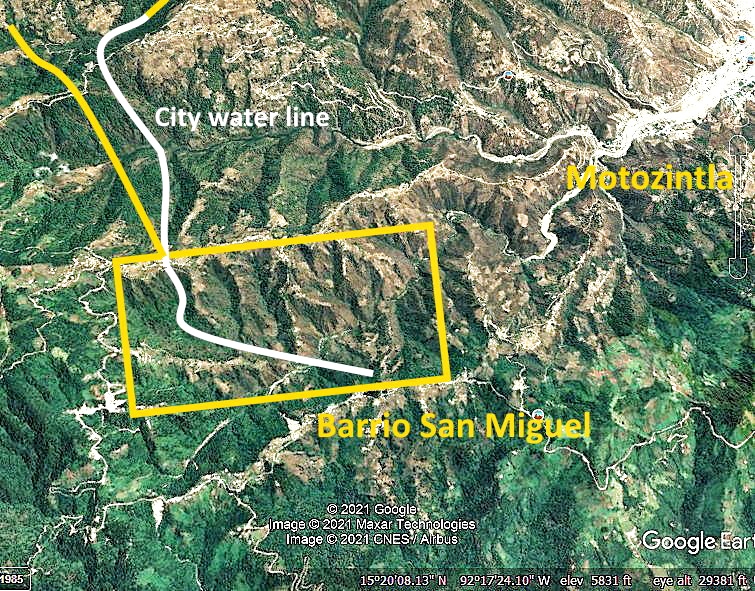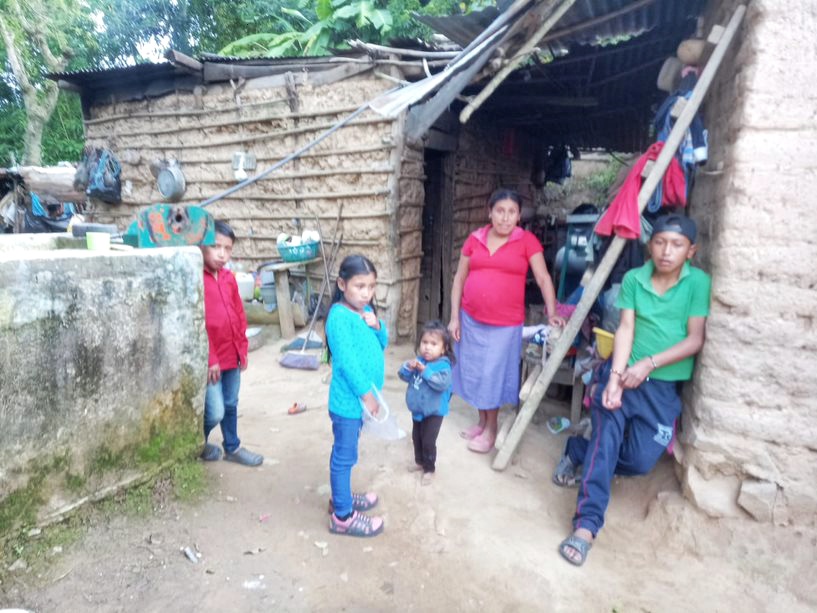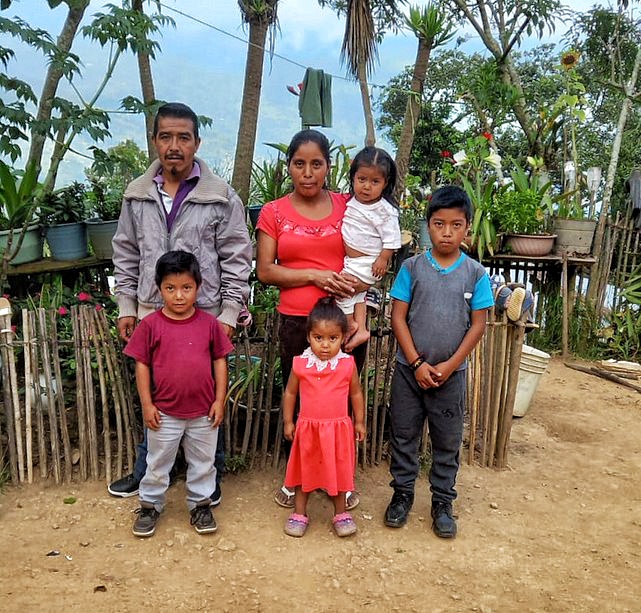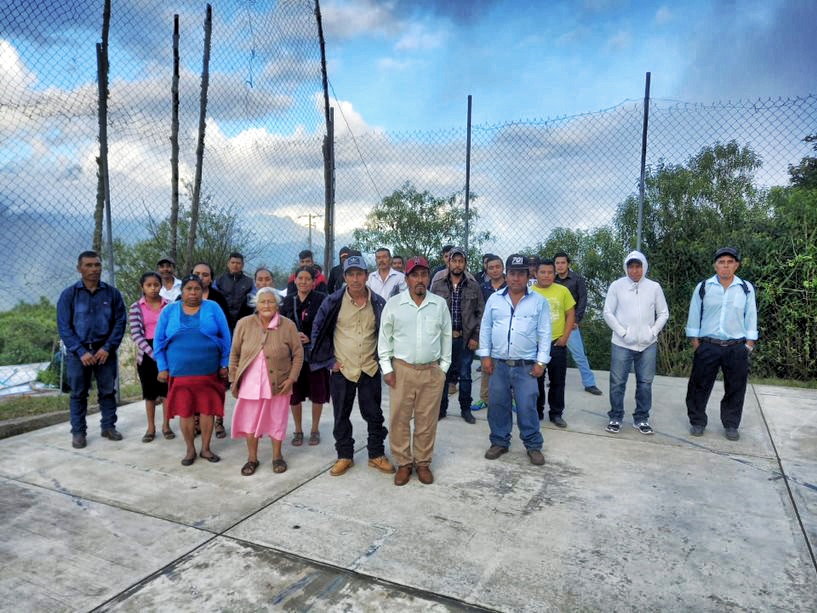Location: Barrio San Miguel, Ejido Benito Juarez, Sierra Madre de Chiapas, México

Description of the Community: Barrio San Miguel is a settlement of 37 families living on a steep ridge with a dramatic view of the city of Motozinla in the river valley below. They build their homes in the traditional ways from adobe blocks made from the yellow clay found in the area or by using reeds and mud to fashion walls by hand. Their dirt patios are swept and tidy, and small gardens of herbs, chilies and flowers are protected from the chickens by fences made of sticks. The Barrio is home to 249 people.
The men have very few opportunities to work for cash other when the fortunate ones find occasional work as masons. Some of the families have sheep which provide manure to fertilize the corn for better yields. Women raise chickens for the eggs and occasionally for the meat when there is a special occasion that calls for a traditional feast of tamales.
In recent years, weather patterns have become increasingly erratic. As a result, there have been years of hunger when the corn crop has failed due to extreme rainfall, drought or extreme wind storms that topple the stalks irreparably in a matter of minutes. It is an impoverished way of life so people do the best they can.

Problem to be solved: Decades ago the local government build a water system for San Miguel another settlement in the area. However as the population has grown in villages nearby, others have tapped into the same water system that San Miguel residents had relied on. Now there is not been enough water to meet their needs. During the dry season, they have had to survive without water for extended periods. When the water does come in the dry season, it is “boiling hot” since the metal pipes bake in the sun during the months of cloudless days in the high country.
Description of the Project: To their good fortune, the community has secured ownership of a perineal creek 3 kilometers away. But poverty that has prevented them from buying the expensive materials needed to bring the water to the community. They tried for years to find help from the local authorities without success.

This project will create a new water line from the creek and connect it to the original holding tank to take advantage of the existing individual hoses that distribute the water to each home. The entire system will be gravity fed. We will build a dam at the source using rock from the site to allow the water to pool for uptake. The water line will be made of a 2-inch ployduct hose that will be buried along its length to keep it out of the sun. This is the kind of system we have already designed and built in over 2 dozen communities in the region.
Sexto Sol will advise them on how to manage variations in water pressure along the line to create even flow and maintain the hose in good working order. We will also provide them with a specially designed water uptake filter to help cut down on the work of maintaining the system.
Who will benefit: The population in San Miguel is 249 people. The water will also serve for sanitation at their public meeting hall.
Administration of the Project: The project will be administered by Tamara Brennan, Ph.D. of The Sexto Sol Center for Community Action, an award-winning non-profit that has had a permanent presence in the region since 1997. She has been working with the community to review technical issues and develop the plan to be followed.
This project will be part of the on-going effort of the Sierra Madre Water Program, a comprehensive collaboration of the Sexto Sol Center with Water Charity and the National Peace Corps to improve water access in the underserved, impoverished communities in the Sierra Madre region of Chiapas, Mexico and Guatemala. To date, this multi-year effort has brought water to more than 11,700 people.

Monitoring and Maintenance: The families are organized into a formal water committee with leaders who oversee everything related to their water system. Each household is expected to send an able-bodied person to work on the project according to a schedule they will agree on. They have already cleared the wide path through the forest where the hose will be installed in preparation for this project. As is customary practice, the water committee, with its leaders elected by the people, will organize the on-going maintenance of the system into the future. A person call a “fontanero” will be charged with ensuring that the water is equally distributed to every household.
The people are anxious to do the work necessary to finally secure enough water for their community. They have enthusiastically confirmed that they will start the work immediately if they were to be so fortunate as to receive this help.
This project has been funded through the generosity of Michael and Carla Boyle of Foster, WV. This project has been finished. To read about the conclusion of the project, CLICK HERE.